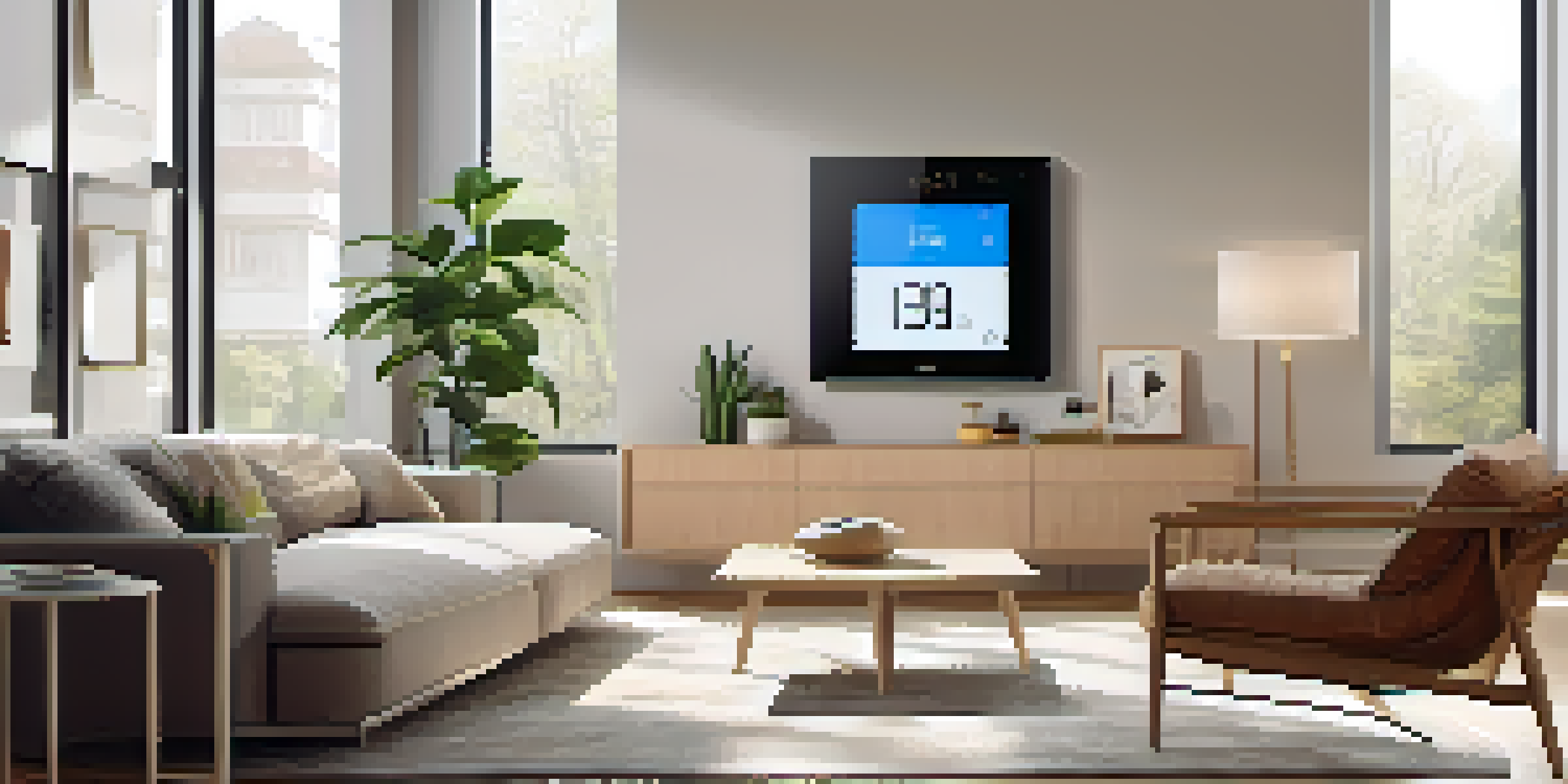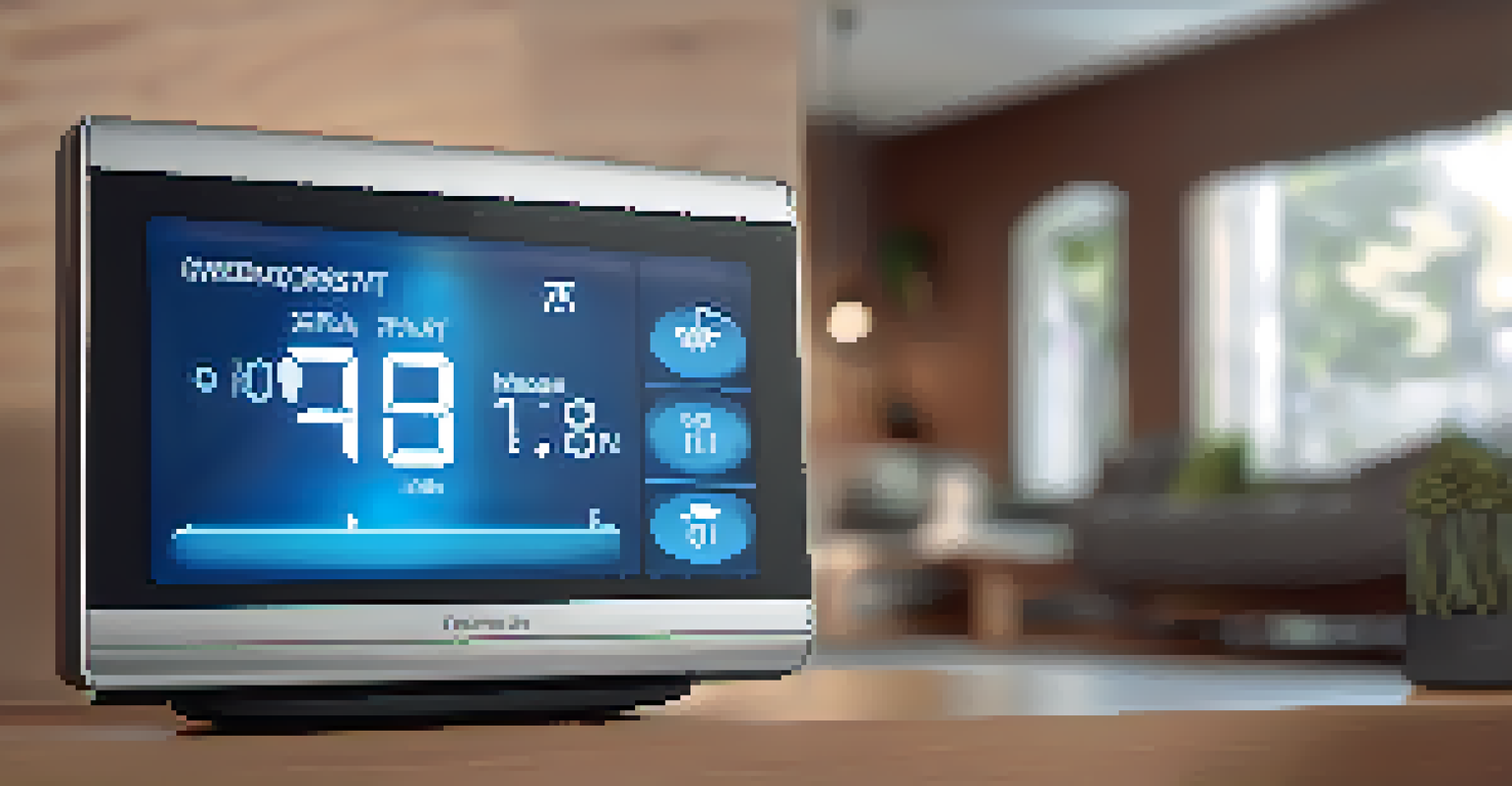How to Automate Your Home's HVAC System Smartly

Understanding HVAC Automation: What Is It?
HVAC automation refers to the use of technology to control your heating, ventilation, and air conditioning systems remotely. Imagine having the power to adjust your home's temperature from your phone while you're at work or on vacation. This convenience not only enhances your comfort but also improves energy efficiency, helping you save on utility bills. By integrating smart devices, your HVAC system can respond to your lifestyle and preferences, making it a valuable investment in your home.
The greatest danger in times of turbulence is not the turbulence; it is to act with yesterday's logic.
For instance, smart thermostats can learn your schedule and adjust the temperature accordingly. This means your home is warm when you arrive and cool when you leave, without any extra effort on your part. Additionally, features like geofencing allow the system to recognize when you're near home and adjust settings automatically. This kind of technology brings a new level of ease and efficiency to managing your indoor climate.
Overall, understanding HVAC automation is the first step toward creating a more comfortable and energy-efficient living space. It opens doors to various smart solutions that cater to your specific needs, ensuring you're always in control of your home's environment.
Choosing the Right Smart Thermostat for Your Home
Selecting the ideal smart thermostat is crucial for effective HVAC automation. Look for features like Wi-Fi connectivity, compatibility with your existing HVAC system, and user-friendly interfaces. Popular options include the Nest Learning Thermostat and Ecobee SmartThermostat, both of which offer unique features that cater to different preferences. For example, Nest learns your schedule over time, while Ecobee includes additional sensors for more precise temperature control throughout your home.

Consider factors like energy reports, remote access, and integration with other smart devices when making your choice. A good smart thermostat will provide insights into your energy usage, helping you identify ways to improve efficiency. Additionally, check if the device can connect with voice assistants like Alexa or Google Assistant for added convenience.
HVAC Automation Enhances Comfort
HVAC automation allows for remote control of heating and cooling systems, improving energy efficiency and comfort in your home.
Ultimately, the right smart thermostat can make a significant difference in automating your HVAC system. By taking the time to research and compare your options, you can find a solution that meets your needs and enhances your home's comfort.
Integrating Smart Sensors for Optimal Comfort
Smart sensors play a vital role in enhancing your HVAC system's performance. These devices monitor temperature, humidity, and occupancy, providing valuable data to your smart thermostat. For instance, if a room is unoccupied, the system can adjust the temperature accordingly, ensuring energy isn't wasted on cooling or heating empty spaces. This not only enhances comfort but also helps you save money on energy bills.
Technology is best when it brings people together.
Moreover, some smart sensors can detect air quality levels, alerting you when it's time to change your air filters or improve ventilation. This proactive approach to indoor air quality can significantly impact your health and well-being. Imagine a system that not only keeps your home comfortable but also ensures you breathe clean air.
By integrating smart sensors into your HVAC setup, you're taking a significant step toward a more responsive and efficient home environment. These devices help create a tailored experience, ensuring each room in your home is at the perfect temperature, no matter the time of day.
Scheduling Your HVAC System for Maximum Efficiency
One of the most effective ways to automate your HVAC system is by setting schedules. Most smart thermostats allow you to program heating and cooling times based on your daily routines. For instance, you might prefer a cooler home during the day when you're out and a warmer atmosphere during the evening when you're relaxing. By scheduling your HVAC system, you can optimize energy usage while maintaining comfort.
It's essential to consider seasonal changes when creating your schedules. For example, you might want to set your HVAC system to cool your home more during summer months and reduce heating during mild winter days. This flexibility helps you adapt to changing weather conditions and minimizes energy consumption.
Smart Thermostats Optimize Efficiency
Choosing the right smart thermostat can significantly enhance your HVAC automation, providing insights into energy usage and facilitating remote access.
Incorporating scheduling features into your HVAC automation not only enhances your comfort but also ensures that your energy usage is as efficient as possible. By taking control of your system's settings, you can enjoy a cozy home without the worry of skyrocketing energy bills.
Utilizing Geofencing for Smarter Temperature Control
Geofencing is a cutting-edge feature that enables your HVAC system to adjust based on your location. By using GPS technology, your smart thermostat can detect when you're nearing home or leaving, automatically adjusting temperatures to suit your arrival or departure. This means your home is always at the perfect temperature when you walk in, without wasting energy while you're away.
For example, if you leave for work every morning around 8 AM, your HVAC system can automatically lower the temperature, saving energy during your absence. Then, it can begin warming your home shortly before you return, ensuring you step into a cozy environment. This level of automation not only enhances your comfort but also contributes to overall energy savings.
Utilizing geofencing is an excellent way to ensure that your HVAC system is working efficiently and effectively. This technology allows you to enjoy a comfortable home without the constant need to adjust settings manually, providing peace of mind and convenience.
Monitoring Energy Usage for Cost Savings
Monitoring your energy usage is a crucial aspect of home HVAC automation. Many smart thermostats provide detailed reports on your energy consumption, helping you identify patterns and adjust settings accordingly. By understanding your energy use, you can pinpoint areas where you might be wasting money and make informed decisions to reduce your bills.
For example, if your energy report shows high usage during certain times, you might consider adjusting your thermostat settings or scheduling HVAC operation during off-peak hours when rates are lower. This awareness allows you to take proactive steps in managing your home’s energy efficiency, leading to significant savings over time.
Regular Maintenance for Longevity
Maintaining your automated HVAC system through regular checks and smart alerts ensures its longevity and optimal performance.
By regularly monitoring your energy usage, you're not just automating your HVAC system—you're actively participating in creating a more sustainable and cost-effective home. This commitment to energy efficiency can have a lasting impact on both your wallet and the environment.
Maintaining Your Automated HVAC System for Longevity
Regular maintenance is essential to ensure your automated HVAC system continues to perform effectively. This includes changing air filters, cleaning ducts, and checking for system updates. By keeping your system well-maintained, you can prevent issues that may lead to decreased efficiency or costly repairs down the line.
Incorporating smart technology can also aid in maintenance. Many smart thermostats will alert you when it’s time to change filters or schedule professional services, making the process more manageable. This feature ensures that you stay ahead of maintenance needs, keeping your system running smoothly and efficiently.

Ultimately, maintaining your automated HVAC system contributes to its longevity and performance. By taking a proactive approach to care, you'll enjoy a comfortable home environment and save money on energy costs for years to come.